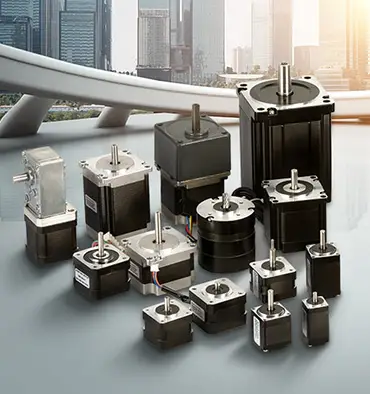How to increase the dynamic torque of a stepper motor?
Stepper motors have the advantages of high precision, high torque, and low noise, and are widely used in precision instruments, medical devices, automation equipment, and other fields. However, the dynamic torque of stepper motors may be a limiting factor in some applications, especially in high-speed and heavy load conditions. For this problem, some manufacturers consider changing the frame size or length to increase its torque. Although this method is feasible, there are some applications where the mounting space is fixed and can't accommodate the altered stepper motor, and other methods need to be considered. In this article, we will discuss methods to increase the dynamic torque of stepper motors.
Motor and drive circuit selection
Selecting the right stepper motor and drive circuit is the first step in improving dynamic torque. Stepper motors with high torque ratings and low-speed ratings are well suited for applications requiring high dynamic torque. The drive circuit should be able to supply the required current and voltage to the motor. Drivers with high current ratings and low voltage ratings are suitable for high-speed and heavy-duty applications.
Reduction of motor inductance
Motor inductance can limit the dynamic torque of a stepper motor. Inductance can be reduced by using a motor with a lower inductance rating or by adding a resistor in series with the motor windings. Resistors should be selected based on the inductance of the motor and the required torque rating. By reducing the inductance, the motor can produce more torque at high speeds.
Adding motor windings
Increasing the number of motor windings can also increase dynamic torque. Motors with more windings have higher torque ratings and can produce more torque at high speeds. However, an increase in windings also increases the inductance of the motor, which can limit high-speed performance. Therefore, the proper number of windings must be selected based on the application requirements.
Optimization of stepper motor drive circuits
Optimization of stepper motor drive circuits can also increase dynamic torque. Drive circuits should be designed to minimize voltage drop and maximize current delivery to the motor. The use of high-current drivers and low-voltage power supplies can help accomplish this. In addition, the drive circuit should be designed to reduce motor inductance and minimize the effects of inductive backlash.
Use of hybrid stepper motors
The hybrid stepper motor combines the advantages of a permanent magnet motor and a variable reluctance motor. It has a higher torque rating than conventional stepper motors and can produce more torque at high speeds. The hybrid motor uses permanent magnets for the rotor and a variable reluctance stator, which allows it to produce more torque and reduce inductance.
Use of brushless DC motors
Brushless DC motors can also be used as an alternative to stepper motors. It has a higher torque rating and can produce more torque at high speeds. Brushless motors use permanent magnets for the rotor and three-phase stator, which allows them to produce more torque and reduce inductance. However, brushless motors require more complex drive circuitry and may not have the same level of accuracy as stepper motors.
Conclusion
Increasing the dynamic torque of a stepper motor can be accomplished in several ways, and the specific method chosen depends on the specific application requirements and the level of performance desired.


Leave a Reply